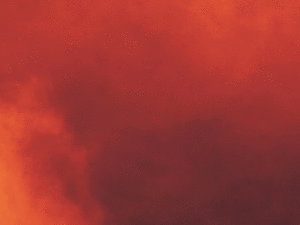Pesach Begins with a Miracle and Ends with a Tragedy
Time is passing at great speed. I was writing about Erev Pesach not long ago, and now we have arrived at the beginning of Iyar (the month whose name is an acronym for the phrase “ani Hashem Rofecha — I am Hashem your Healer”). Many things have happened over the past two or three weeks. Of course, there have been several unfortunate deaths. Just on the day of this writing, we were informed about a terror attack in the vicinity of Kerem Shalom, where four soldiers were killed. Ironically, Kerem Shalom is the crossing where truckloads of humanitarian aid enter Gaza.
Then there was the heartrending story of Elyakim Libman Hy”d, who was brought to burial in Chevron on Sunday. Hespeidim were delivered at the Me’oras Hamachpeilah compound, where Elyakim’s bris, upsherin, and bar mitzvah had been celebrated, and where the family had planned to bring him to the chuppah.
Elyakim Libman was presumed to have been held in captivity by Hamas since Simchas Torah. The young man, who lived in the Kiryat Arba-Chevron Council, was working as a security guard at the music festival on the morning of Simchas Torah. When the Hamas terrorists arrived in the area, Libman fought them and managed to save the lives of many of the festival’s participants. After all contact with him was lost, many believed that he had been taken hostage, although there was no indication of his capture. A few weeks ago, a suspicion arose that Libman might have been buried together with another victim from the festival. On the instructions of the Religious Affairs Ministry, seven graves were opened in recent weeks, and the DNA findings showed that Libman had been buried together with another security guard. The official announcement of his death on October 7 was released on Friday. The levayah was attended by many participants, including government ministers and members of the Knesset. In some ways, all of Klal Yisroel shared the grief and pain of the bereaved parents, after the entire nation had davened for so long for Elyakim to be brought home along with the other hostages.
In happier news, there was a great miracle in Yerushalayim on erev Pesach. You may be familiar with the Nachalas Akiva shtieblach on Rechov Techeles Mordechai. Between the shtieblach and Rechov Shamgar, there is a sharp right turn in the road. I am not sure if the small street that meets the main road there and leads to a small group of new buildings even has a name, but it became the site of a terror attack on Erev Pesach. The incident began when a car hurtling up the road from the direction of Nachalas Akiva plowed into a group of bochurim standing at the corner. The car skidded out of control, turned around the bend, and crashed into a parked car, and two terrorists jumped out of the vehicle and ran toward the bochurim while carrying a machine gun. Miraculously, the gun jammed; footage of the incident shows the terrorists slamming their weapon into the asphalt in an effort to restore its function, albeit to no avail. At that point, they fled from the scene. Two hours later, the two terrorists were captured in a storage room. One can only begin to imagine the dreadful consequences if the gun had actually fired. Not only would they have murdered the four bochurim standing on the street corner (who miraculously survived the incident with only a few scratches) but they might even have moved on to the shtieblach….
Last Friday, I visited the site of the terror attack to see it with my own eyes. The car that bore the brunt of the impact of the terrorists’ vehicle was still there, its doors visibly crushed. I asked someone why the owner hadn’t taken it to be repaired, and he replied, “It must belong to an American who isn’t even in the country now.”
This week, the bochurim who survived the attack held a seudas hodaah with family and friends.
We were fortunate to begin Pesach after experiencing that miracle. Sadly, the holiday ended on a much more somber note, with the terror attack at Kerem Shalom and the news that Elyakim Libman had been murdered.
Missile Strikes in Meron Area
A few words are in order about Meron and Lag Ba’omer. On Sunday, a ministerial committee convened to deliberate the plan for the upcoming Lag Ba’omer in Meron. During the meeting, the ministers were informed that the attorney general had notified the cabinet secretary that the meeting was likely illegal. This was a team of ministers who had been appointed by the prime minister, in light of the conclusions of the Meron investigative commission, to implement the recommendations in the commission’s report. In any event, the Home Front Command currently maintains that the hilula of Lag Ba’omer should not be held this year.
The general public is also not in favor of allowing the usual festivities to be held in Meron. Moreover, just two days ago, twenty rockets were fired from Lebanon and exploded in an open area on Mount Meron, with powerful explosions heard throughout the area. No air raid sirens were heard at the time, but the sirens in the settlement of Tzivon went off shortly thereafter. One week earlier, rockets had also been fired at the settlement of Meron and at other communities in the area, such as Safsufa and Ohr Haganuz. A missile even landed precisely in the area where Rav Elimelech Biderman generally holds his hadlokah. On Motzoei Shabbos, missile fire caused heavy damage to Burma Road, which is considered an escape route from Meron in the event of a catastrophe. In case you are wondering why Meron is in the line of fire at all, the answer is that there is a military base on the mountain, which has already been damaged twice, albeit lightly, by missiles fired from the north. I will not be surprised if the hilula is canceled this year and only a small hadlokah, led by the Boyaner Rebbe, is held. On the other hand, if a ceasefire deal is reached with Hamas, then the situation could change dramatically.
The disaster in Meron three years ago has been etched into the public consciousness and will likely continue haunting the country for years to come. Its impacts extend beyond the annual hilula on Lag Ba’omer. When the cabinet met this Sunday, the ministers decided to limit the number of participants in the memorial services at various military cemeteries next week, on Yom Hazikaron (Israel’s day of remembrance for fallen soldiers). This, of course, was one of their takeaways from the tragedy in Meron. The cabinet adopted an outline for Yom Hazikaron formulated by the Defense Ministry together with other ministries, the police force, and other relevant authorities for the memorial services throughout the country. This decision focused particularly on events held at the large cemeteries on Mount Herzl and in Kiryat Shaul, Haifa, and Be’er Sheva. Last year, the police were responsible for approving the safety standards at each of the cemeteries, including the maximum occupancy. This year, the police informed the public that they would not be issuing the same permits. Again, this was based on the conclusions of the Meron investigation. In light of the decision of the police force, the Defense Ministry was required to come up with new safety procedures, including a formula to determine the permitted crowd size at each cemetery. The arrangement permits a crowd size that is relatively larger than at other heavily attended events. In light of the events of October 7 and the Iron Swords War, which took the lives of hundreds of IDF soldiers and other members of the security services, this year’s memorial events are expected to be especially crowded. At the same time, the cabinet accepted a limit on crowding proposed by the Ministry of Defense, especially concerning the attendees at the cemeteries.
Two Weeks of Uncertainty
For the past two weeks, we have been living in the shadow of a possible deal with Hamas. The exact details of the agreement are being kept under wraps and are known only to a handful of decision-makers, but it seems that Israel is preparing to make the greatest possible concessions to Hamas. Netanyahu is trying to keep his concessions within reasonable bounds, but the Americans have been pressuring him relentlessly to give in to more demands. To their credit, though, they seem to be pressuring Hamas to the same degree. In fact, the Americans have even asked the government of Qatar to expel all the senior Hamas officials who live in the country if they do not relax their stance.
The truth is that even these days of nerve-racking waiting are a defeat for Israel. A cruel, murderous tyrant living in the tunnels of Gaza is managing to toy with the emotions of an entire country. The man behind the vicious massacre of Simchas Torah is playing games with the entire world. He is receiving offers and responding that he has to “think” about them, that he must “examine” the terms of a deal and confer with his colleagues as to whether to accept it. Meanwhile, the great United States of America waits for his decision, while Israel keeps its silence, and the hostages’ families are driven mad with worry. It is a miserable, horrific, and disgraceful situation.
Equally saddening is the degree to which Israel is paralyzed. Everyone knows that a Jew naturally cares for other Jews and that the State of Israel leaves no one behind, neither on the battlefield nor in captivity. And our enemies are wickedly exploiting that fact. From time to time, Hamas has published videos of hostages begging the government to do everything possible to secure their freedom. We all know that they are suffering terribly there, but Hamas is demanding the release of hundreds of murderers with blood on their hands in exchange for the freedom of these innocent hostages, and that, too, is a prospect that makes our blood run cold.
Netanyahu Forced to Respond to Attacks Against Him
The violent protests calling on Netanyahu to immediately agree to a deal with Hamas at any cost seem to be playing directly into the terrorists’ hands. That is a very painful thing. It also seems that the behavior of Ministers Gantz and Eizenkot, who are constantly warning Netanyahu that he must make concessions, is boosting Hamas’ cause as well. The two ministers make it seem as if they are the only ones who care about the hostages in Gaza, and anyone who disagrees with their notion of how to handle the situation is simply apathetic.
At the beginning of the week, Netanyahu published a video responding to various reports in the media that he claimed were impeding the negotiations and causing the families to suffer. “Contrary to the reports,” Netanyahu said, “it is Hamas who is responsible for holding up the release of our hostages. We are working in every way possible to secure their freedom, which is our top priority. Israel was prepared and is still prepared to accept a pause in the fighting in exchange for our hostages’ freedom. We did that when we freed 124 hostages and then we returned to fighting, and we are prepared to do the same today.
“Agan, contrary to the media’s account,” Netanyahu went on, “the negotiating team has been given a very broad mandate to advance the hostages’ freedom and to put an end to their terrible suffering. Throughout the negotiations, Israel has agreed to make significant concessions, which Secretary of State Anthony Blinken labeled extremely generous, but Hamas remained entrenched in their extreme positions, especially in their demand for us to remove all of our forces from the Gaza Strip and to leave Hamas in power. The State of Israel cannot accept that. Hamas will take control of Gaza again and will resume being a threat to the citizens of Israel. In that case, it will be only a matter of time until the next October 7…. Did our soldiers fall for that purpose? Is that why we have paid these unbearable prices? The answer is no. Giving in to Hamas will be a victory for Hamas, Iran, and the entire axis of evil. This weakness will bring the next war closer. Therefore, Israel will not agree to the demands of Hamas that signal surrender; it will continue fighting until it has achieved all its goals.”
The State Responds to the Court
You have probably surmised that the battle against bnei yeshivos is still going on. The clock is ticking, and the pressure is mounting. You may recall that the Supreme Court decided to halt funding to yeshivos and ordered the government to explain why it is not beginning to draft the yeshiva bochurim. The state asked for an extension and then asked for another extension before submitting its response, while clashing with the attorney general in the process. Attorney General Baharav-Miara apparently agrees with the petitioners demanding the draft of all yeshiva bochurim, and due to her bias, the government asked to be represented before the Supreme Court by lawyers of its own choosing in her place. This is a highly unusual step, but it was also necessary. The only problem was that this change of procedure needed to be approved by the attorney general, who was recently accused by Cabinet Secretary Yossi Fuchs of doing everything in her power to thwart the government at every turn. The attorney general did agree to allow the government to be represented by other lawyers, but she did not permit the same move for the Ministry of Defense.
The following is the response sent to the Supreme Court by the government on May 1: “In accordance with the honored court’s decision on March 28, 2024, the state is honored to present the following supplementary affidavit from the defense establishment. As you will recall, in the written response of the government on March 28, 2024, it was noted that ‘if the court finds it appropriate, the state suggests allowing it to provide a supplementary affidavit that will detail how the draft authorities are preparing to induct talmidei yeshivos and graduates of chareidi schools.’ … The ruling of the court issued on the same day stated, ‘In light of the contents of the respondents’ reply (and the letter from the prime minister accompanying it) the respondents will be permitted to submit a supplementary affidavit by April 30, 2024.’ In accordance with the above, the following is an update on the defense establishment’s preparations for the conscription of talmidei yeshivos and students of chareidi institutions, as received from the defense establishment.
“It should first be noted that as long ago as December 2023, the Ministry of Defense and the IDF began preparatory work for the integration of chareidim into the armed forces. This administrative work is continuing at this time as well, with the goal of formulating a plan of action and specific tasks for the relevant bodies in the IDF and the security services to implement the draft of chareidim in the immediate future, as well as a course of action to facilitate the draft in the long term as well. Since Government Decision 682 has expired and has not been extended, and an alternative legal arrangement has yet to be legislated, discussions about conscription of the members of the chareidi populace were held under the aegis of the Minister of Defense, the chief of staff of the IDF, and members of the upper echelons of the IDF and the Defense Ministry. In these discussions, alternatives to preparing for conscription of chareidim were discussed in light of the various complexities involved in the size of the population, its characteristics, and the needs of the current war. The Minister of Defense also met with various authorities for the purpose of advancing a law based on a broad consensus. The relevant authorities are working on formulating a plan for the gradual conscription of the chareidi community’s youths. The initial administrative work for formulating this plan is expected to end within a few weeks. We, therefore, ask to be allowed to update the court again with the details of the plan before the next hearing on these petitions, on a date to be determined by the court for a supplementary affidavit to be filed by the government, as per its request of April 25, 2024. The facts presented above have been confirmed by Mr. Shachar Katz, chief of staff of the Minister of Defense, whose affidavit will be signed and submitted as quickly as possible.”
The Likely Outcome: Slashed Budgets but No Draft
Netanyahu will likely find it very hard to overcome the hurdle posed by the draft law crisis. There is simply no way to satisfy everyone or to pass a law that will work in both directions. If the Supreme Court (as well as Gantz and company) is pleased with the results, then the chareidim will be displeased. If a law entails significant changes to the status quo, then the gedolei Yisroel will inevitably be opposed to it. This is a problem that is very difficult to resolve. Within the chareidi community, opinions are divided even on the most ambiguous question: what position should be taken concerning bochurim who are officially registered in yeshivos but spend very little time there?
For the time being, Netanyahu is trying to stall. It is possible that before things truly come to a head, there will be another election and possibly another attempt to change the composition of the Supreme Court so that the judges will not have the audacity to try to overturn laws passed in the Knesset.
At this point, any draft law that would pass muster with the chareidim is bound to displease many other elements in the Knesset, including some members of the Likud party. Perhaps that is the reason that three MKs from the Likud party (Dan Illouz, Moshe Saada, and Diaspora Minister Amichai Chikli) decided to introduce a new privately sponsored draft law rather than waiting for a solution presented by the government. The newspaper Makor Rishon reports that the three MKs have come up with a law that would offer financial incentives for military service and would also call for certain benefits to be revoked from individuals who do not serve in the army or national service. As I said, there is no sign on the horizon of a draft law that would address the calls for “equality in sharing the burden” in a way that will be acceptable to everyone.
The three lawmakers’ independent draft law was penned after the coalition failed to introduce a government-sponsored law that would satisfy both sides, meeting the approval of the chareidi politicians (and gedolei Torah) as well as Ministers Gallant and Gantz. Their goal was also to appease the attorney general and the justices of the Supreme Court, who insist that government funding for yeshivos must be contingent on “equal sharing of the burden.” The coalition, meanwhile, is busying itself preparing for the dramatic court hearing on the lack of a draft for chareidim, which is scheduled at the beginning of June. Much less attention is being given to a version of the draft law to be formulated by the government, which would only serve to inflame the passions on both sides.
According to the law proposed by the three Likud lawmakers, anyone who did not serve in the military would be disqualified from government programs such as the Mechir Lamishtaken program for affordable housing. In addition, he will not receive government funding to cover his academic studies. The laws’ authors claim that half of the citizens of Israel do not serve in the army, a very broad group that includes chareidim, Arabs and about ten percent of the general public, and there is no reason for their studies to be subsidized by the state to the tune of tens of thousands of shekels per capita. “The government spends many billions of shekels sponsoring higher education for students,” Saada explained, “while a major portion of the funds are granted to institutions for students who did not serve the state.”
Perhaps this will be the solution to the current deadlock. The most important thing is for the bnei Torah to continue learning, and this law, despite the sweeping financial ramifications, will not prevent them from doing that. How will they sustain themselves?
Closing Thoughts
I am not finished yet; I have much more to write about. For instance, there was the Lev L’Achim event in Yerushalayim, which served to illustrate several facts, especially the prodigious impact of Lev L’Achim’s kiruv work. (Those efforts have been especially productive over the past few months, as large swathes of the Israeli public, reeling in the aftermath of the Simchas Torah massacre, began seeking closer ties to Yiddishkeit.) Also on display were the enthusiasm of the yungeleit who volunteer for the organization, as well as their powerful bonds with gedolei Yisroel. A long list of gedolei Torah graced the kinus with their presence, offering encouragement to the organization that is on the front lines of the battle for kiruv in Eretz Yisroel. A highly moving panel discussion featured several baalei teshuvah including Idan Cabessa, whom I once interviewed in Yated Neeman.
I will end by quoting Rav Moshe Shmuel Shapiro, my rebbi and the man who breathed life into my entire family, whose yahrtzeit is on Rosh Chodesh Iyar. The Gemara states in Maseches Yevamos that Rabi Akiva had twelve thousand pairs of talmidim who died in a plague, and the world was bereft of Torah until Rabi Akiva taught it to five more talmidim. The Gemara’s account concludes with the words, “They restored the Torah at that time,” and Rashi explains that the Torah had been forgotten, which was the reason that the world was bereft of Torah after the deadly plague. But it is surprising that the Gemara then states that Rabi Akiva’s new talmidim restored the Torah “at that time,” implying that it was restored immediately. How was it possible for the void left by the deaths of 24,000 talmidei chachomim to be filled overnight?
“This points to an incredible principle,” Rav Moshe Shmuel explained. “The Torah’s influence is not a natural force; the Torah learned by bnei yeshivos simply has the power to influence the entire world as long as there is one yeshiva in the world, but when that yeshiva is disbanded, then the Torah becomes forgotten. On the other hand, when the yeshiva is reopened, the Torah of its talmidim fills the entire world with its impact once again. A yeshiva is the center of the vitality of Torah on earth,” he concluded, “and it is only the spirit of the yeshiva that causes those who learn Torah anywhere to be suffused with its light.”







